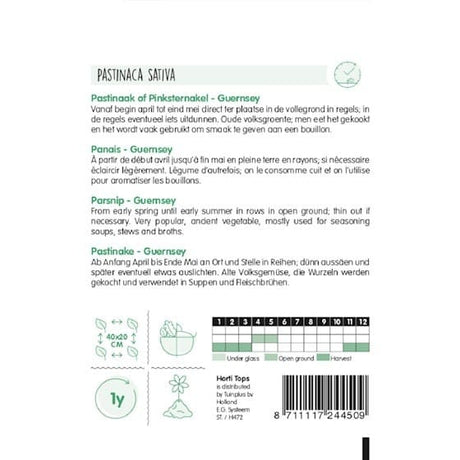Parsnips are a classic root vegetable that enriches any winter meal with their sweet, earthy flavors. Requiring a longer growing season and a bit of patience, parsnips are perfect for gardeners looking to enjoy a harvest that improves with the cold. Learn how to grow, care for, and harvest parsnips, transforming your garden into a bounty of this delightful crop.
Cultivate Sweet and Nutty Parsnips for a Winter Feast
Optimal Growing Conditions for Parsnips
Parsnips thrive in deep, well-drained soil that is free of stones and clods to prevent forked roots. They are best planted in early spring as they have a long growing season and need time to develop their full flavor, which becomes especially pronounced after the first frost.
Soil Preparation and Planting
Prepare the soil by removing rocks and breaking up clumps to create a smooth, deep bed that allows for unrestricted root growth. Parsnips prefer soils rich in organic matter, so add plenty of well-rotted compost before planting. Sow parsnip seeds directly into the ground, about 1 cm deep, spacing them about 5 cm apart in rows that are 30-45 cm apart. Parsnip seeds can be slow to germinate, so patience is key.
Watering and Care
Keep the soil consistently moist throughout the growing season. Parsnips require a lot of water, especially as they start to develop deep roots. Mulching can help retain soil moisture and control weeds, which can compete with the slow-growing parsnip seedlings.
Thinning and Weed Control
Once seedlings have emerged and are about 5 cm tall, thin them to about 10-15 cm apart. This spacing allows each parsnip to grow fully without overcrowding. Regular weeding is important, as parsnips do not compete well with invasive plants.
Harvesting Parsnip
Parsnips are typically harvested in late fall or early winter, after the soil has started to cool and the first frosts have sweetened the roots. They can be left in the ground throughout the winter and harvested as needed, as the cold improves their flavor. Use a fork to gently lift them from the ground to avoid breaking the long roots. You can also slowly pull and twist to bring it up to the surface.
Pest and Disease Management
Keep an eye out for pests like carrot flies and root maggots. Using row covers can help protect the crop from carrot flies. Some suggest crop rotation though we've never experienced any issues with planting them in the same garden bed twice.
Pest and Disease Management
Keep an eye out for pests like carrot flies and root-knot nematodes. Employ protective measures like row covers can help protect the crop from carrot flies. Maintaining clean garden practices help prevent fungal diseases, which can affect parsnips, especially in wet conditions.









